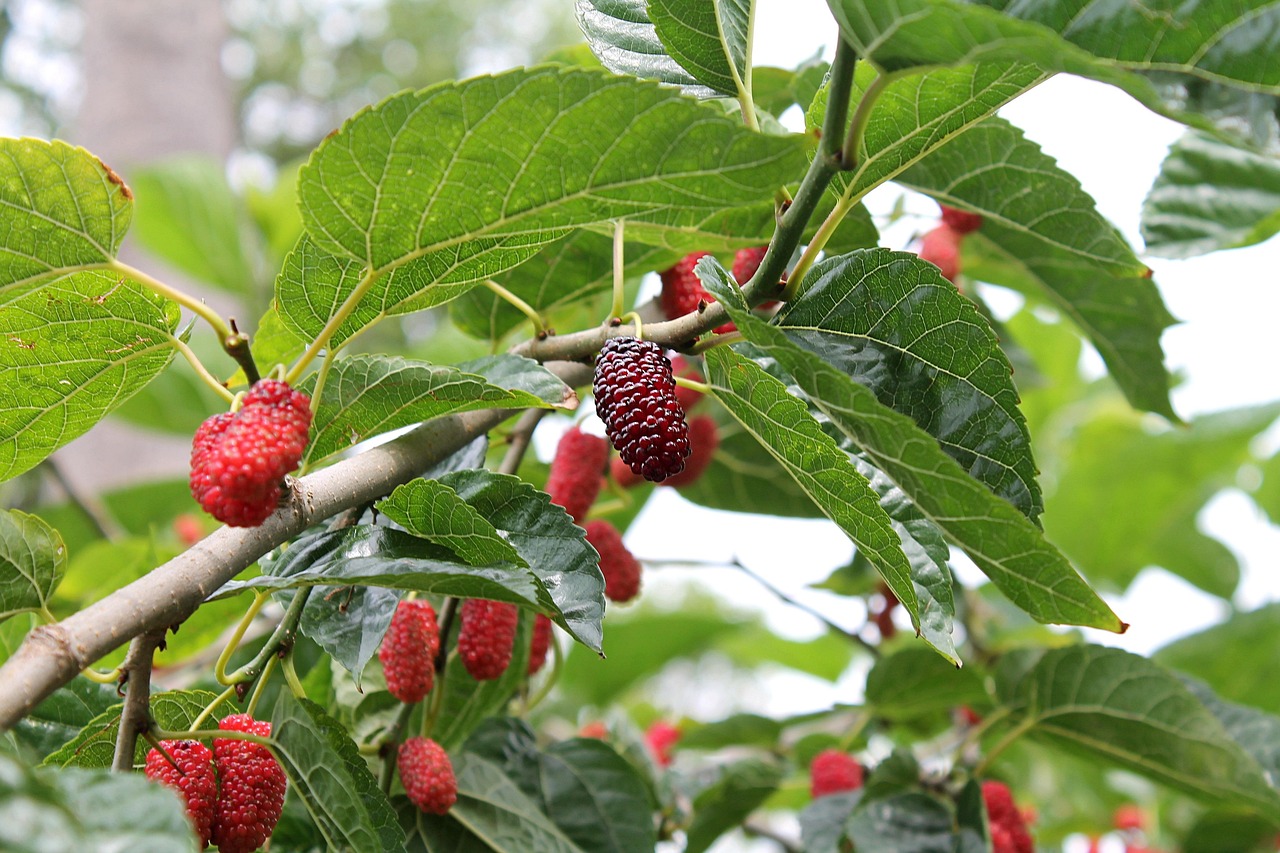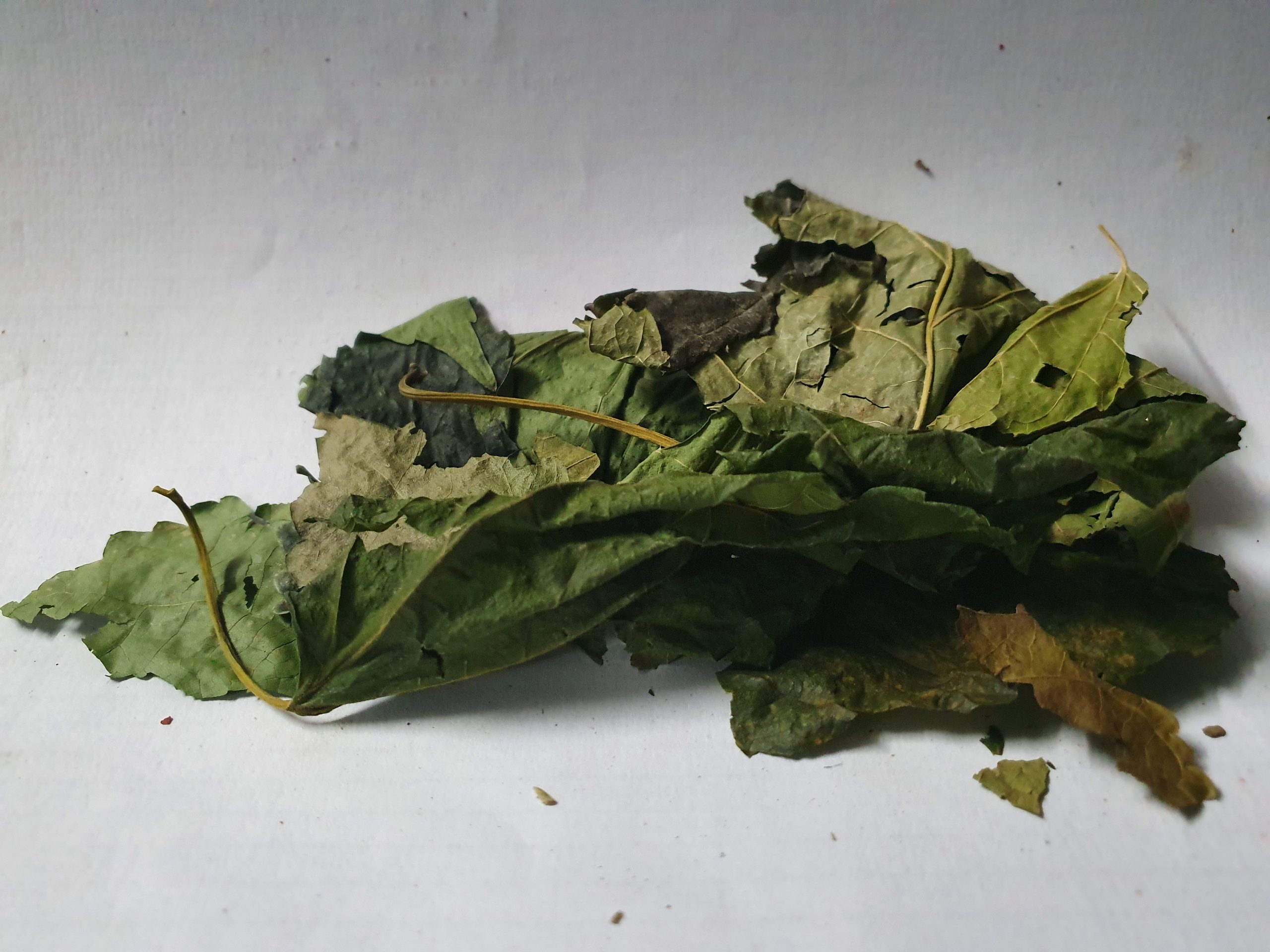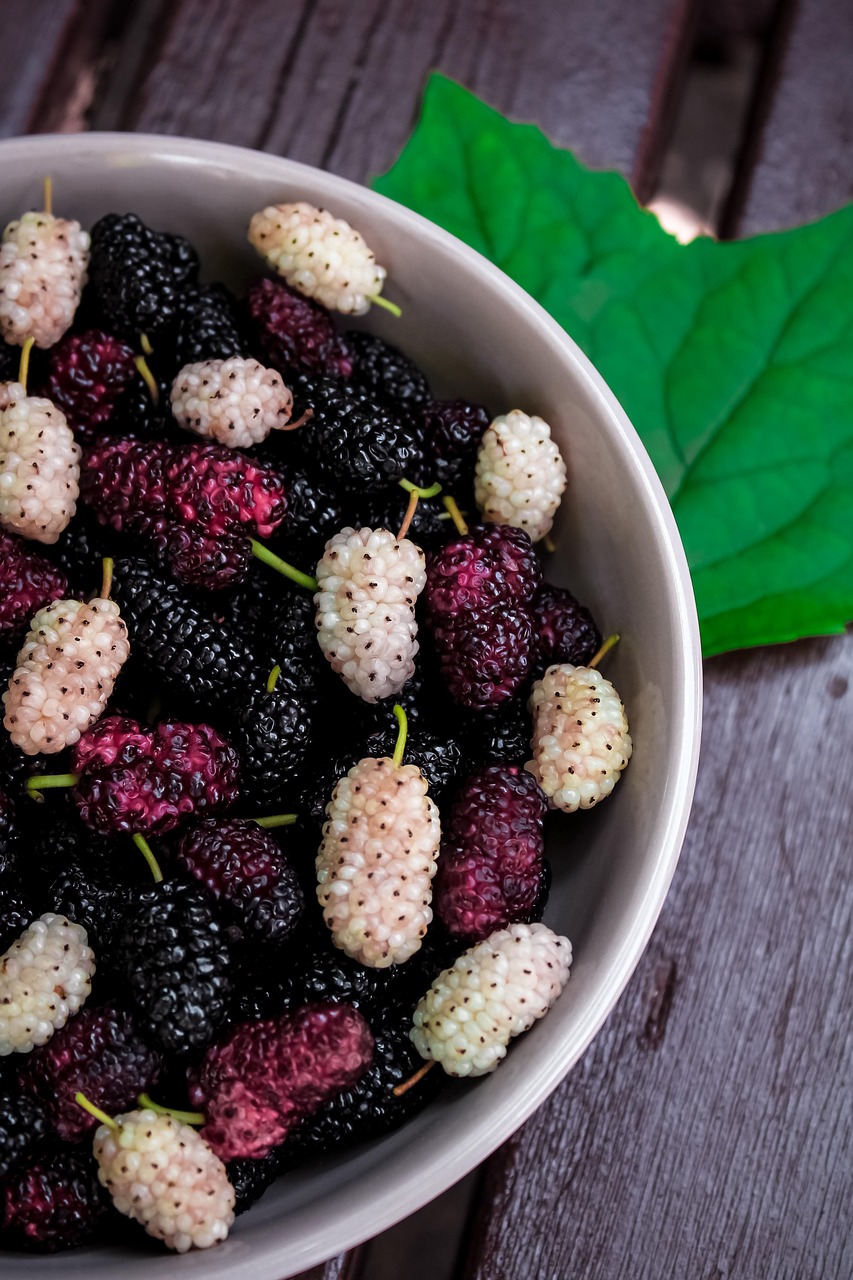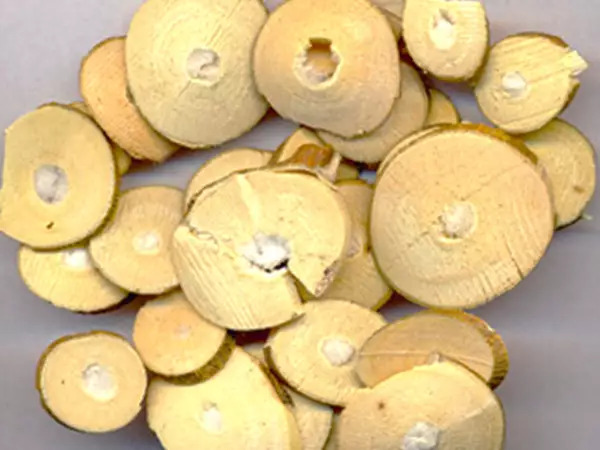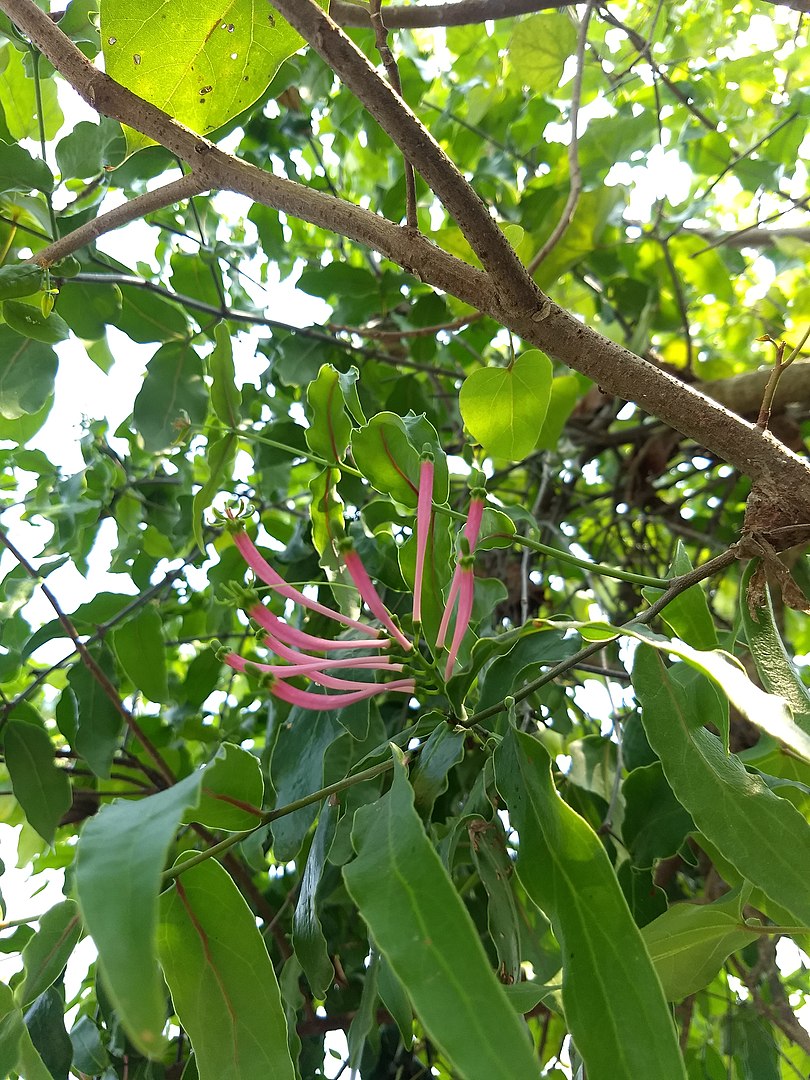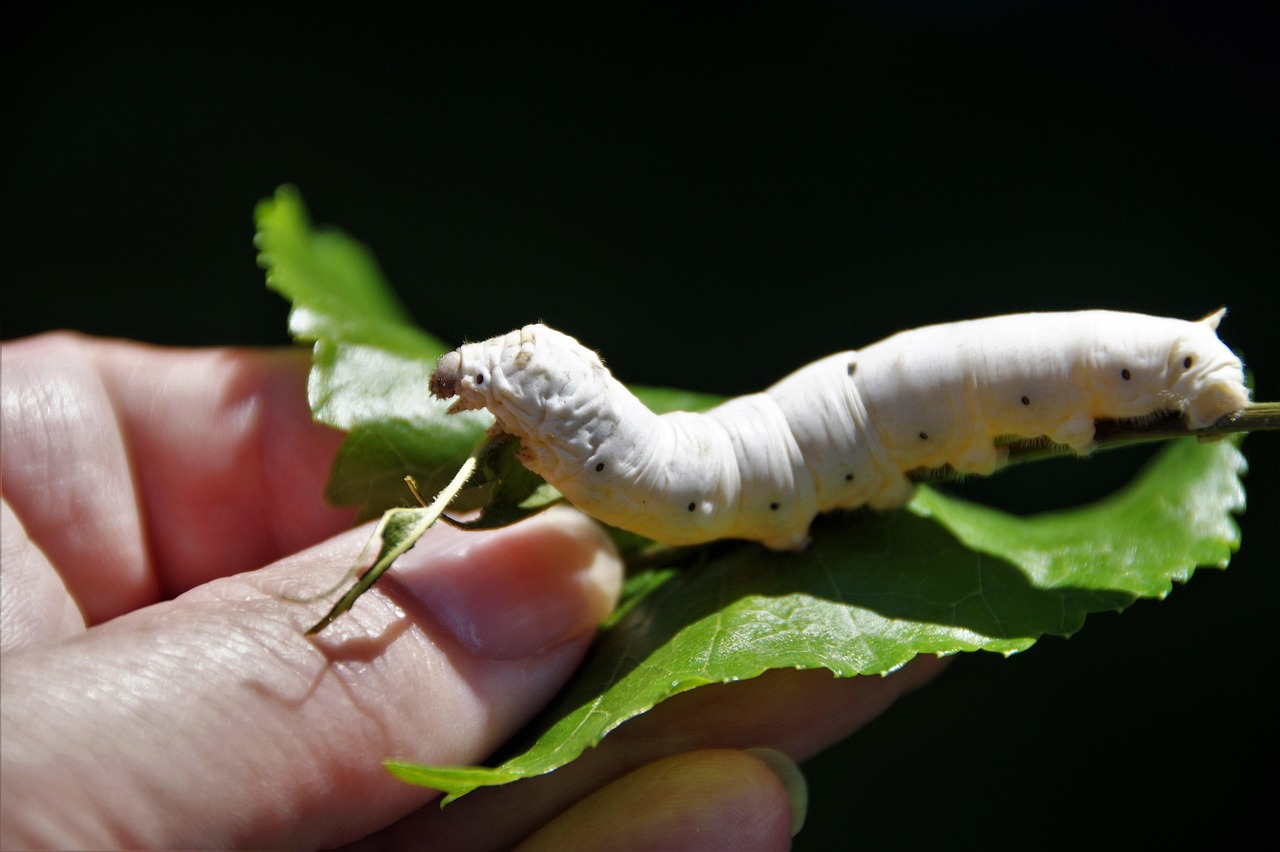The much maligned mulberry, banned in many places such as the USA and Brazil for its highly invasive nature, is unique in two ways: 1) it provided, directly or indirectly, a greater variety of medicinal substances than any other plant, and; 2) it changed the course of human history. This article is primarily about the former, but I’ll look at the latter later.
When I taught Chinese Materia Medica, a course in which students learn all of the properties of over 1,000 medicinal substances, one of the challenges was to make the subject tangible beyond the pages of the texts. At this stage in their studies, clinical experience was focused on acupuncture, and their only exposure to herbs was through books and lectures. Many plants commonly used in Chinese Medicine (CM) grow all around us, sometimes in our own back yard. In order to help them “get in touch” with the topic, my students had a regular assignment to identify and report on such herbs which they identified around town. Making connections with plants they see every day helped them to memorize their properties, functions and indications.
A perennial favorite was the mulberry tree, and for good reason. The mulberry tree originated in China, but spread throughout the globe, and is now considered an invasive species in many areas. It is a tree of tremendous historical as well as medical importance, being the host of the silkworm. Silk production in China was so important that the primary inter-continental trade route for 1,500 years, up until the mid-15th century was named for it: the Silk Road. More on that later.
This silkworm itself provides two medicinal substances, but the mulberry tree provides no less than four, and another parasite of the tree, mistletoe, provides yet another. It is not unusual for CM to use different parts of a plant for different purposes, but such a range is unique. Depending on the part of the tree used, it may work on acute conditions like colds and flu, or chronic conditions like atrophy. It may work on the most superficial levels of the body, or the deepest levels. Some are used to address psychological/emotional issues, others explicitly physical. Some are nourishing, others are “dispersing”2.
In this article, I will explore the variety of uses of the different parts of the tree. This does not constitute medical advice, and use of any herb should be approached with caution. Even those which are not toxic (none of these are) can produce unwanted side effects and be harmful to your health. Doctors of Chinese Medicine spend years of study before prescribing, and for good reason. As regards the fruit…eat up!
The tree
I should specify that I am discussing the white mulberry. Despite the wide range of functions and indications attributed to the various parts, we can, never-the-less, identify some commonalities. CM classifies pharmaceuticals in various ways including their nature4, flavor5, part(s) of the body affected, and pathogenic influences6.
The mulberry tree is cold in nature. All plants are placed on a spectrum from hot to cold, which is an indication of its ability to either increase or reduce body temperature, either systemically or locally. It primarily affects the Lung System7 and the Liver System8. Most parts are bitter or pungent, flavors associated with clearing and dispersing pathogenic influences, and among these, the mulberry targets wind, dampness and phlegm.
The leaves
Mulberry leaves are one of the most commonly used herbs to treat certain types of cough: those associated with warm weather colds and flu, and those with a lot of phlegm in the lungs. In CM, the Lung System controls the skin as well as the lungs themselves, and is responsible for temperature regulation. It is our primary defense against all airborne pathogens, including viruses and bacteria. Sāng yè is one of the main ingredients9 in the classical formula sāng yè tāng, which exemplifies the treatment of colds occurring in warm weather.
Among other things, the Liver System is responsible for vision and the eyes, and the leaves are important in treating red, swollen eyes. Interestingly, in both these applications, sāng yè is most often combined with chrysanthemum flowers10. In CM, herbs are (almost) always used in combinations, and certain pairings are recognized as particularly useful. (Herbal combinations11, usually pairings, constitute a separate course in the Chinese curriculum, but is sadly missing in the curriculum in the USA.)
The fruit
Mulberries are delicious. If you spot them around your neighborhood, pick a few and taste. If you are ambitious, pick a lot and make jam.
While the leaves affect the most superficial parts of the body, the fruit affects some of the deepest levels. Unlike the other parts, the fruit has no affect on the Lungs, but does strongly affect the Liver. While the other parts of the tree are primarily used to treat pathogens, the fruit is nourishing, building the resources the body needs to heal itself. More specifically, it nourishes the blood. The Chinese concept of blood is more expansive than the western definition, and “insufficiency of blood” is often the root not only of anemia but also of insomnia, depression, and other emotional disorders. Physical manifestations include hypotension, dizziness, and tinnitus. The mulberry fruit is currently being used in China for the treatment of diabetes.
The twigs
If the pathogenic forces of wind, dampness and heat make it through the superficial levels of the body, they enter the joints, limbs, and what CM refers to as the “sinews”13. This can lead to symptoms such as swelling, pain, numbness, or even paralysis. Where the mulberry leaves focus on the superficial layers, the twig or branch penetrates deeper as well, expelling the pathogenic forces from those areas. This herb is targeted at the Liver.
The root bark
On the other hand, the root bark is focused on the Lungs, not the Liver. Sāng bái pí is commonly used to treat cough and asthma. Its ability to cool and expel phlegm makes it ideal for cough and asthma characterized by thick, viscous sputum, perhaps yellow.
The root bark is also a diuretic, and is used to treat edema, especially that occurring in the face or limbs. It may seem strange that a medicine which targets the Lung would have anything to do with urinary function. There is a saying that “the Lungs are the upper source of water”. While urination is primarily the responsibility of the kidneys and urinary bladder, the Lungs provide downward movement in the body, and obstruction of the Lungs can result in urinary difficulty and consequent edema.
Mistletoe
Mistletoe is, of course, an entirely different plant from the mulberry: it is a parasite which lives on the tree. Never-the-less, its uses are similarly to the uses of the mulberry itself. Sāng jì shēng combines the nourishing characteristics of the mulberry fruit with the pain and numbness relieving abilities of the root bark. It is used to treat more advanced conditions of limb disorders including pain, stiffness, numbness, and atrophy14.
Sāng jì shēng has another property which will seem odd to westerners. It is said to “calm the fetus”. It is one of about a dozen herbs that are used to treat a range of pregnancy-related issues from morning sickness to bleeding and threatened miscarriage. These herbs are even added to formulas for pregnant women when treating disorders unrelated to the pregnancy. Some, such as the mistletoe, also promote lactation post-partum. Doctors of Chinese Medicine in the USA rarely treat pregnant women due to insurance liability issues, but herbal medicine and acupuncture are very useful in treating many common problems which go along with being pregnant.
The silkworm
Few plants can claim to have had a greater impact on human history than the mulberry. It is not for its medicinal power, rather for the fact that it is the sole host to the silkworm.
Until the Middle Ages, silk was only produced in Asia, mainly in China and India16. Chinese silk in particular was much desired throughout the ancient world, from Japan, whose need was insatiable, to the courts of western Europe where it was prized by the aristocracy and wealthy. It was a major factor in the relationship between China and Japan, and provided a foothold for eventual Western naval and trade dominance in the region.
When the Portuguese arrived in Asia, China and Japan were in a state of conflict and had no trading relationship. Never-the-less, the silk trade was very important to both countries. The Portuguese were able to access the famously closed societies by acting as go-betweens, buying silks in China and selling them in Japan17.
Of course, many other commodities were traded between Europe and China (and India), spices being of particular import, and the naval routes quickly surpassed in importance the overland Silk Road. The wealth accumulated by Europe as a result of this trade, and their focus on the naval and military technology needed to carry it out, ushered in the long era of western world dominance.
And none of this would have happened if not for the mulberry tree.
Getting back to medicine, it may come as a surprise, but, despite the name, Chinese Herbal Medicine includes more than just herbs. Beyond the plant kingdom, the Materia Medica includes animals and substances derived from them, fungi, and mineral substances.
This is an example of a medicinal substance that is both an animal and a fungus. These are silkworms which die after contracting a fungus called “Bombys bassiana*. (In CM terminology, this is considered an invasion of wind pathogen.) Similar to what we saw with the mistletoe, despite being an entirely different species, and even a different kingdom, the silkworm also works on the Lungs and Liver, where it treats relatively severed conditions of spasms, convulsions, and paralysis. (Usually animal substances have stronger effects compared to plants.)
As you may recall, the Lungs are responsible for the skin, and while the silkworm does not treat cough, it is commonly used to treat skin itching, rashes, and swelling of the throat, another part of the body belonging to the Lung system. The Lungs also control the voice, and this is used to treat loss of voice.
Introducing this herb always got a reaction from my students, ranging from nervous giggles to outright disgust, exacerbated when I told them cán shā has a sweet flavor. The Chinese name of this medicinal is quite pleasant, as it translates into English as “silkworm sand”.
In keeping with a major function of the medicinals so far discussed, cán shā expels wind and dampness, thereby treating pain and swelling in the limbs and itchy skin rashes. Unlike the other herbs however, which are cold, cán shā is warm. This is an example of how medicinals are chosen based on a range of criteria. Even though this herb and the root bark go to the same parts of the body and focus on the same pathogens, they are not interchangeable, and inappropriate choice due to misdiagnosis can lead to complications.
Cán shā is actually more important clinically to treat dampness in a different part of the body. It affects the abdomen and the digestive system (stomach and pancreas19). Symptoms include severe abdominal pain, vomiting, diarrhea and cramps. When used for this, it is always paired with another herb, Chinese flowering quince mù guā 木瓜 Chaenomeles Fructus.
Closing thoughts
Chinese herbal medicine is a complex and voluminous topic. It has evolved continuously over two thousand years, refining methods and understanding of the properties of thousands of medicinal substances. I hope that I have given you a flavor (no pun intended) of how herbs are used by doctors of oriental medicine, a way very different from that of western herbalists.
Always be cautious when taking any herbal medicine. It is a common misconception that taking “nutritional supplements”, as herbs are considered in the USA, can’t really hurt you, but they can. The person stocking the shelves may not be the best resource for good information, so do your homework.
On the other hand, sāng shēn, those delicious purple berries, can be enjoyed by the handful, and make for a delicious jam. Look around your neighborhood, or in green spaces around you. If you find mulberries, pick some and enjoy.
References
Footnotes
Mulberry branch image by Ирина Кудрявцева from Pixabay↩︎
dispersing refers to eliminating pathogens↩︎
Photo by Christopher Eden on Unsplash↩︎
hot, warm, neutral, cool, cold↩︎
sour, sweet, salty, bitter, pungent↩︎
heat, cold, damp, phlegm, wind, etc.↩︎
The Lung System includes much of the immune system. It controls the exterior of the body, and is responsible for resisting external pathogens which result in, eg. colds and flu.↩︎
The Liver System includes the muscles and joints. It plays an important role in emotional regulation, and poor function can result in irritability, anger, depression and poor sleep.↩︎
the other being chrysanthemum flowers↩︎
jú huā 菊花 Chrysanthemi flos↩︎
duì yào 對藥↩︎
Mulberries image by Анастасия Белоусова from Pixabay↩︎
This includes the tendons and ligaments↩︎
Mistletoe also goes to the Kidneys and is commonly used for lumbar pain↩︎
India’s traditional Ayurvedic medicine is as old as China’s medical system, and shares a number of features.↩︎
by means of the Black Ship↩︎
Silkworms with feces image by Alexandre Lacerda de Almeida from Pixabay↩︎
This organ is, unfortunately, called the Spleen in Chinese medicine.↩︎
